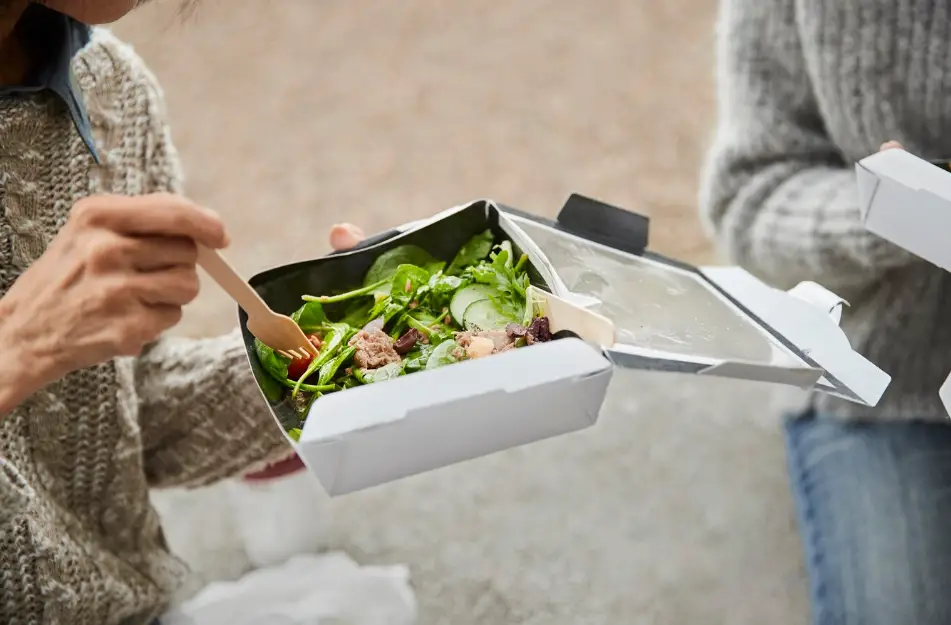From Farm to Fork: Tracing the Causes of Listeriosis in Packaged Salads

Packaged salads, often perceived as a healthy and convenient meal option, have been at the center of attention due to recent outbreaks of listeriosis. Listeria monocytogenes, the bacterium responsible for listeriosis, poses serious health risks, particularly to vulnerable populations. Understanding the journey of packaged salads from farm to fork is crucial for tracing the causes of Listeria contamination and implementing effective preventive measures. In this article, we will delve into the process of tracing the causes of listeriosis in packaged salads and explore key factors contributing to contamination along the supply chain.
Farming Practices:
The journey of packaged salads begins on the farm, where various leafy greens, vegetables, and herbs are cultivated. While farms play a crucial role in providing fresh produce, they can also be potential sources of Listeria contamination. Factors such as soil quality, irrigation water, animal proximity, and worker hygiene practices can influence the risk of Listeria contamination during farming activities.
Harvesting and Processing:
Once harvested, salad ingredients undergo processing, which involves washing, cutting, and packaging. Despite rigorous sanitation protocols in processing facilities, Listeria contamination can occur during these stages. Cross-contamination from equipment, surfaces, or workers, as well as improper handling practices, can introduce Listeria bacteria to packaged salads.
Packaging and Distribution:
Packaged salads are then packaged and transported to distribution centers and retail outlets for sale to consumers. Throughout the distribution process, temperature control is critical for inhibiting the growth of Listeria bacteria. However, temperature fluctuations during transportation and storage can compromise the safety of packaged salads and increase the risk of contamination.
Consumer Handling:
Once purchased, packaged salads are subject to consumer handling practices, which can further influence the risk of Listeria contamination. Improper refrigeration, extended storage durations, and failure to follow storage instructions on product packaging can increase the likelihood of Listeria proliferation. Educating consumers about safe food handling practices is essential for minimizing the risk of listeriosis.
Tracing Listeriosis Outbreaks:
When cases of listeriosis are reported, public health agencies undertake thorough investigations to trace the source of contamination. Epidemiological studies, food testing, and traceback investigations are key components of the investigation process. By analyzing patterns of illness, identifying common food exposures, and testing samples of suspected products for the presence of Listeria, investigators can pinpoint the source of contamination and implement corrective actions to prevent further spread of the bacteria.
Preventive Measures:
To mitigate the risk of Listeria contamination in packaged salads, stakeholders across the food supply chain can implement various preventive measures:
- Stringent sanitation practices in farming and processing facilities to prevent cross-contamination and foodborne illness prevention.
- Proper temperature control during transportation and storage to inhibit the growth of Listeria bacteria.
- Regular testing of finished products and environmental samples to detect the presence of Listeria.
- Consumer education initiatives to promote safe food handling practices and reduce the risk of listeriosis.
Conclusion:
Tracing the causes of listeriosis in packaged salads requires a comprehensive understanding of the entire supply chain, from farm to fork. By identifying potential sources of contamination and implementing preventive measures at each stage of production, distribution, and consumption, stakeholders can work together to enhance the safety of packaged salad products and protect public health. Through collaboration, education, and adherence to food safety protocols, we can minimize the risk of listeriosis outbreaks and ensure the safety of ready-to-eat salads for consumers.



